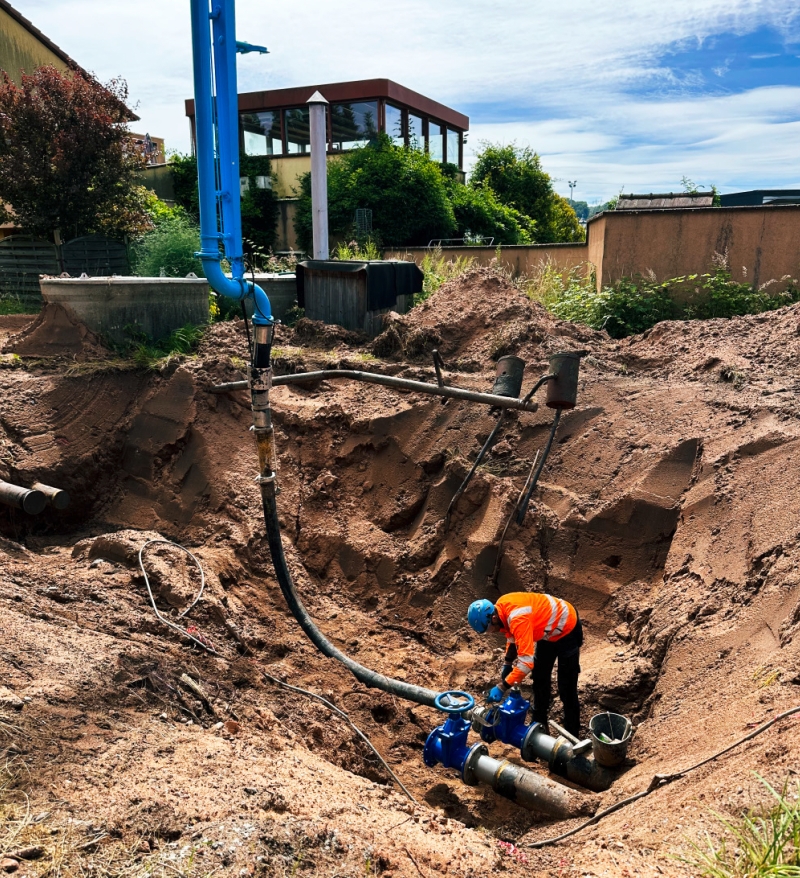Ensuring the safety of buried pipes by injecting concrete. © BRGM - DPSM
Risks linked to the ground and subsurface
Outstanding result / Removal of a network in Moselle
This was the final stage in the closure of coal mining activities in the Lorraine basin. BRGM dismantled a network of pipes that were installed in the late 1960s to carry gas from the mine to two heating systems, a combined heat and power generation plant and a power plant in Germany. “Rather than releasing firedamp into the atmosphere, these installations made it possible to recover this mine gas, which is mainly composed of methane and whose global warming potential is 28 times greater than that of CO2!” explains Alain Pauly.
Although coal mining ceased in Lorraine in 2004, the mine gas was exploited for another ten years, gradually slowing as the viability of the gas deteriorated. No less than 28 kilometres of pipes – 21km of buried pipes and 7km overground piping – were finally completely abandoned, and needed to be dealt with.
Risk of collapse
BRGM, which has managed these mining sites on behalf of the French Government since 2008, was commissioned with this assignment. “First of all, we had to pinpoint the precise location and layout of the network, which stretches over five municipalities, with certain sections situated in forests or on private land,” says Alain Pauly.
Depending on their immediate environment, the buried pipes were either plugged at the ends or filled in by injecting concrete. The aim of this operation was to solidify the pipes that might have caused damage to the surface, roads or other underground networks if they had collapsed.
Asbestos paint
Checks were carried out prior to cutting the pipes, although measures had been taken when the gas exploitation ceased to render any potential firedamp residue inert, since it is explosive when mixed with air. An audit was also carried out to identify the sections covered in asbestos paint. These sections were treated in a “clean” room using an ultra-high pressure water jet to remove the asbestos coating so that the steel pipes could be recycled.
After nine months of work, this major operation was completed in March 2025. The last remaining remnants of the region’s mining past vanished from the landscape with the dismantling of the final 170-metre section, attached to a bridge over railway tracks, and which required a special authorisation for the work to be carried out.







